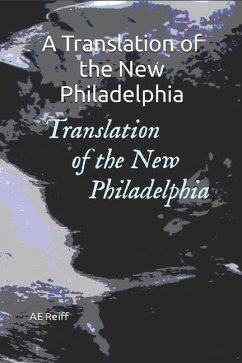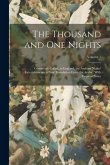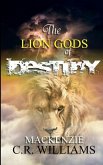The cover features the fantastical scene of a mythological beast with a ship in the background from the French edition of Jonathan Swift's Tale of a Tub. The tub here, symbolizing exploration of the unknown, blending real with mythical, the title in its sails, so to speak, implies a transformation of historical & cultural elements of a perhaps mystical Philadelphia, with an influence from more than Swift of European that embodies myth and philosophy to explore this Philadelphia as a metaphor for any civilization at a crossroads of either salvation or damnation. It could be suggested that salvation requires a "translation," a reinterpretation of current realities, histories, and myths. In this internal journey of the soul "New Philadelphia" there is a strong theme of dualism and interplay between opposites - high and low, taken and left, literal and metaphorical, seen also in the contrast between "higher" and "lower mind." Another duality of Identity and Anonymity uses terms like "Everyman" and the process of naming or not naming characters ("He has no name unless we give him one") to explore the collective versus individual consciousness. "New Philadelphia" could symbolize a new state of existence or understanding of the idea of personal and societal transformation in either a utopian or dystopian vision of society. There are hints of a critique of modern societal constructs, technologies (electro-magnetic), and governance, suggesting a world where the physical and metaphysical collide in mentions of mythical creatures like Leviathan and Behemoth. There's an implication of a deeper, often hidden, truth in disastrous or confusing outcomes of biblical stories involving eschatological visions like Noah's flood, Lot and Sodom, Leviathan, and the Book of Revelation). Phrases like "the days of new Noah" and "the flood came or when the fire fell on Sodom" evoke a sense of judgment and transformation. Unified in a language dense with symbols and metaphors terms like "seraph" (meaning "burning one") and "Leviathan" are not just literal but are used to convey complex ideas about power. Multiple literary, historical, and religious references create a familiarity where thoughts flow to provoke reflection, and perhaps even spiritual or intellectual awakening in the reader. "A Translation of the New Philadelphia" of deeply symbolic and metaphorical text is rich with biblical references, apocalyptic imagery, and philosophical musings.. Perhaps a glossary is in the offing. The writing style creates a sense of urgency and immediacy. Like notes of the scroll Jeremiah wrote about Babylon and had thrown in the Euphrates, these presidential centaurs and Rhinoceroses sunken in the Trojan White Horse are observed from a bridge such as the one in Arcades where onlookers play scrabble from a balcony around Saturn, as if to say someone had a part of their body in common down there. New Philadelphia looks like the old condensed, with parts of words broken off, other languages added, homonyms scheduled for nouns. The waterways symbolize its mythic translation from the English. As they used to say when the ships pulled in and they took names, Welcome to Philadelphia.
Hinweis: Dieser Artikel kann nur an eine deutsche Lieferadresse ausgeliefert werden.
Hinweis: Dieser Artikel kann nur an eine deutsche Lieferadresse ausgeliefert werden.








